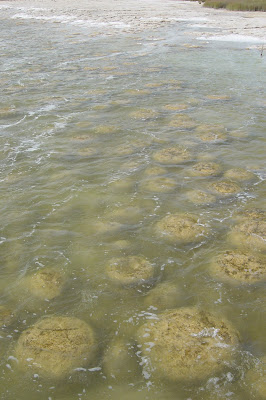Stephan Klemme , Stefan Prowatke, Carsten Münker, Charles W. Magee, Yann Lahaye, Thomas Zack, Simone A. Kasemann, E. Joan A. Cabato and Benjamin Kaeser 2008. Synthesis and Preliminary Characterisation of New Silicate, Phosphate and Titanite Reference Glasses. Geostandards and geoanalytical research 32 32-54.
Eleven synthetic silicate and phosphate glasses were
prepared to serve as reference materials for in situ microanalysis of clinopyroxenes, apatite and titanite, and other phosphate and titanite phases. Analytical results using different micro-analytical techniques showed that the glass fragments were homogeneous in major and trace elements down to the micrometre scale. Trace element determinations using inductively coupled plasma-mass spectrometry (ICP-MS), multi-collector inductively coupled plasma-mass spectrometry (MC-ICP-MS), laser-ablation inductively coupled plasma-mass spectrometry (LA-ICP-MS) and secondary ionisation mass spectrometry (SIMS) showed good agreement for most elements (Li, Be, B, Cs, Rb, Ba, Sr, Ga, Pb, U, Th, Y, La, Ce, Pr, Nd, Sm, Eu, Gd, Er, Tm, Yb, Lu,
Zr, Hf, Ta, Nb) studied and provide provisional recommended values.
So here’s the story: Often the limiting factor in the accuracy of in situ geochemical analyses is the quality and applicability of the reference material or standard. Stephan wasn’t happy with the standards available to the geochemical community, so he synthesized his own, and the rest of us analysed them to determine the composition.
It isn’t much of a story, really. So in order to add some substance to this post, I’ll give the backstory as well. Stephan and I both did our PhD’s on the ex-pet group at ANU- he was a couple of years ahead of me. As it turns out, he was the student whith whom I perpetrated
anecdote number three ten years ago (aside- Easter 1998 was ten years ago. Holy shit! Where did the decade go?)
So, fast forward 8 years, and in August 2006 he comes back to Australia for the Goldschmidt conference. Obviously, a boozy catch-up over dinner is required, and we shoot the shit over the usual subjects of kids, life, and inevitably, geology.
My poster for that conference is on standard synthesis, so Stephan and Simone (I got to meet the entire German-Edinburgh contingent) tell me about these new ion probe standards they have been analyzing. I point out that we could get values out of those glasses, and he informs me that he’d already been invited to use the lab by his PhD advisor, and asks if I want to show them the ropes and get on the paper. So 5 days later, he and Simone rock up to lab, I set up the run, and away we go.
Stephan is very much a petrologist- I suspect his main interest was seeing how little silica he could put into the phosphate glass and still get a quench- but Simone is a ion probe guru, so she was naturally skeptical of the apparent simplicity of laser ICPMS work. So we spent most of the morning looking at various what ifs that could get spurious results, shooting standards, and looking for potential interferences. At the risk of sounding naff, doing science with one’s friends is a lot of fun.
I didn’t have much to do with the interpretation or statistics done on the data, but as the native English speaker I was supposed to fix any Germanisms in the manuscript. “Supposed to” being the key phrase. These guys write so well that I had maybe one prepositional change to suggest in the draft. In fact, I just noticed that the most glaring grammatical error in the final manuscript was in the paragraph that I wrote. Go figure.




